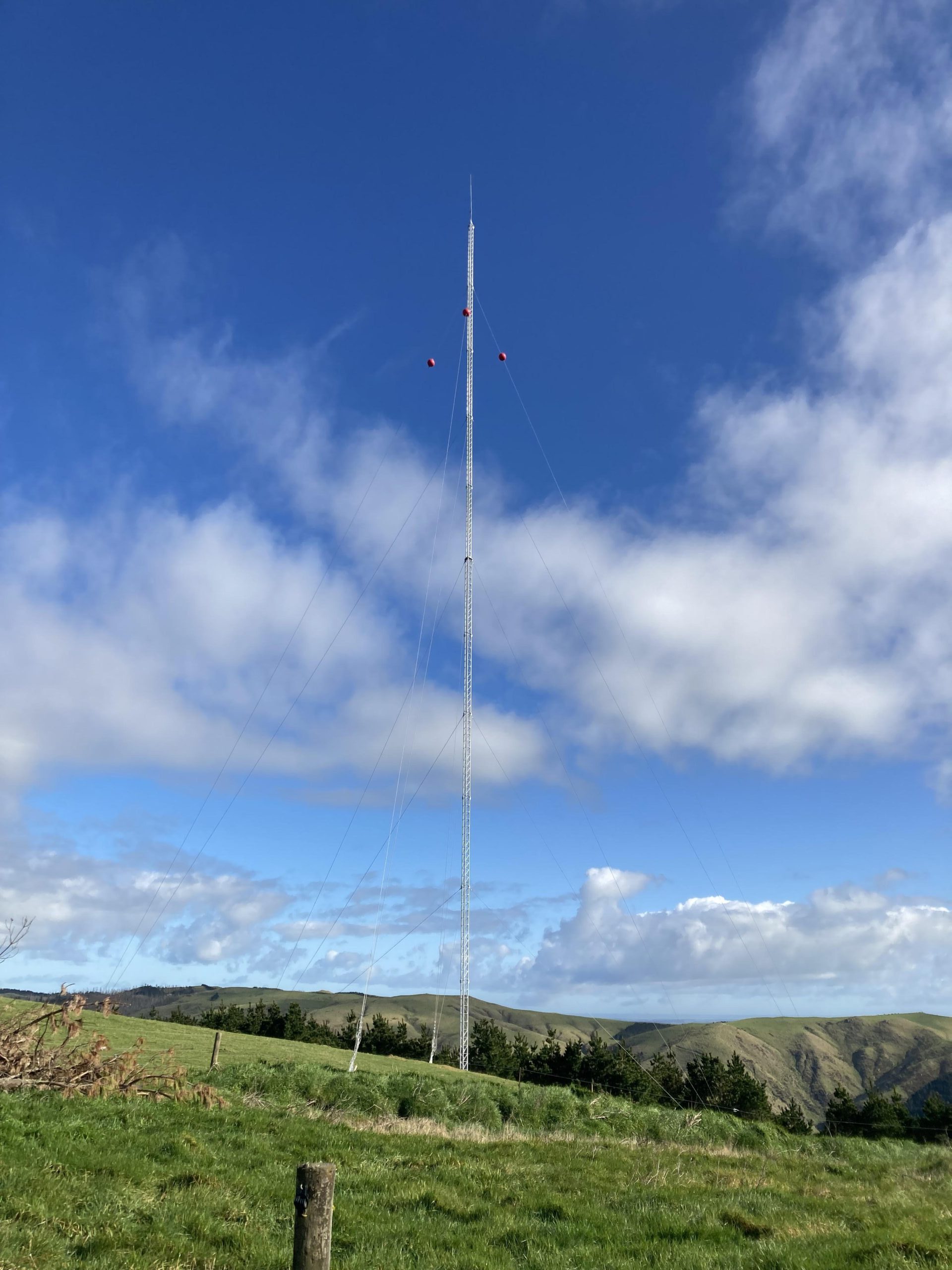Meteorological instruments such as anemometers to measure wind speed and direction are often at the top of exposed structures, putting them at risk from lightning strike. Vestas New Zealand Wind Technology, builder of the isolated Turitea Wind Farm in the Tararua Ranges near Palmerston North in Aotearoa New Zealand, asked our engineer Adam Loucas to assess the structure in the event of a lightning strike.
The masts are 69m tall, with the instruments sitting several metres below a lightning finial. Adam assessed the masts against the national lightning protection standard in force at the time, which included a spreadsheet-based risk management calculation tool to assess the risk of damage in four areas should the mast be hit. These were the risk of death or injury to a person; damage to equipment or the mast itself; damage to cultural treasures such as museums, heritage structures, churches and temples; and essential services, such as structures supporting telecommunications, data, power and water infrastructure.
The documents and plans Adam gathered included ground flash density maps, which showed that area had a low incidence of lightning strikes, and diagrams of the lightning protection system that safely re-directs the energy generated by lightning to earth. His analysis looked at a range of attributes to calculate risk, among them fire risk, the type of internal wiring in the mast, surge protection measures and the location of nearby services.
Adam found that the protections in place met the relevant standards and that given the construction of the masts and their isolation, the human, economic, cultural and structural risks related to the structures were acceptable – that is, very low.
Contact us
Adam Loucas
Principal Engineer


